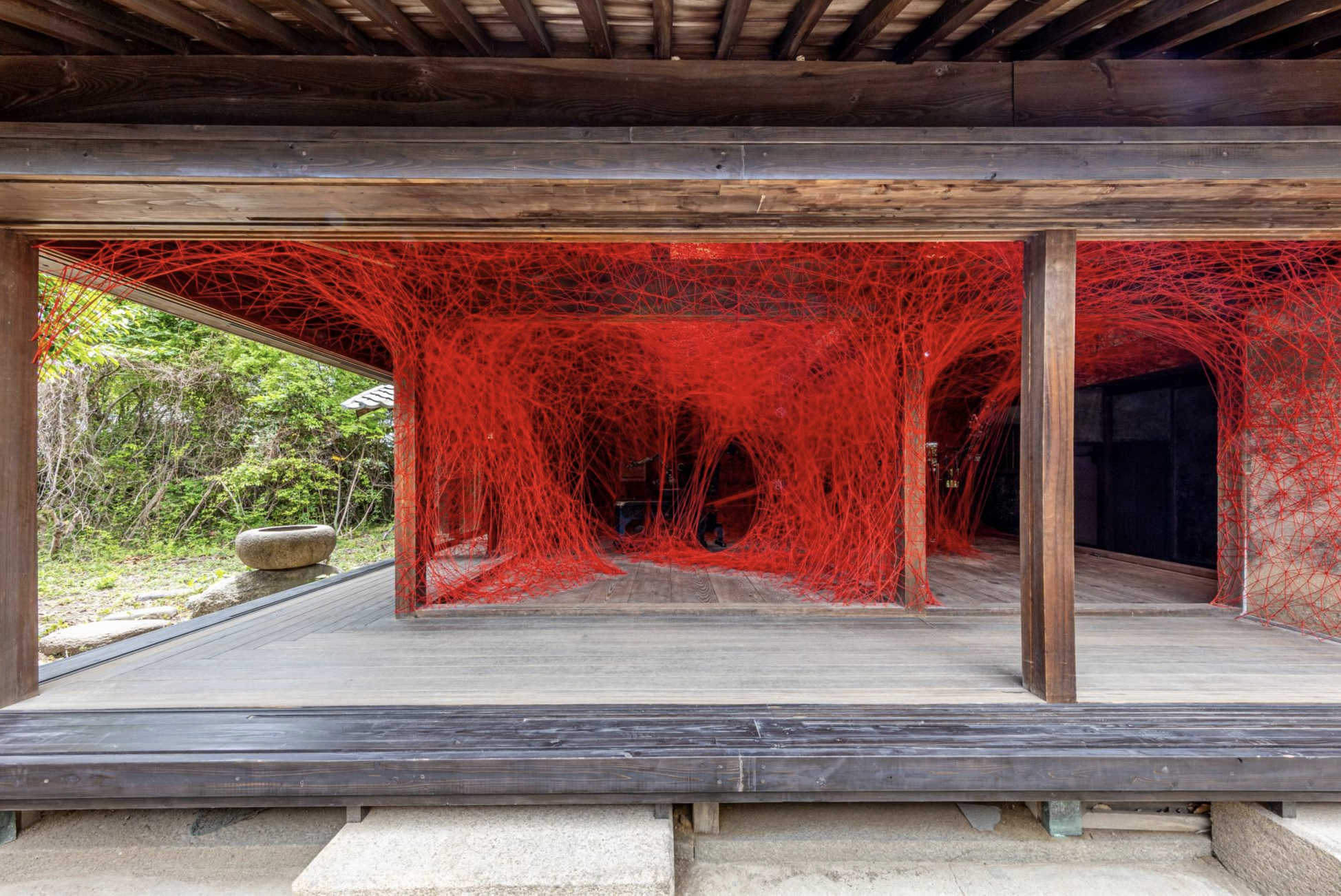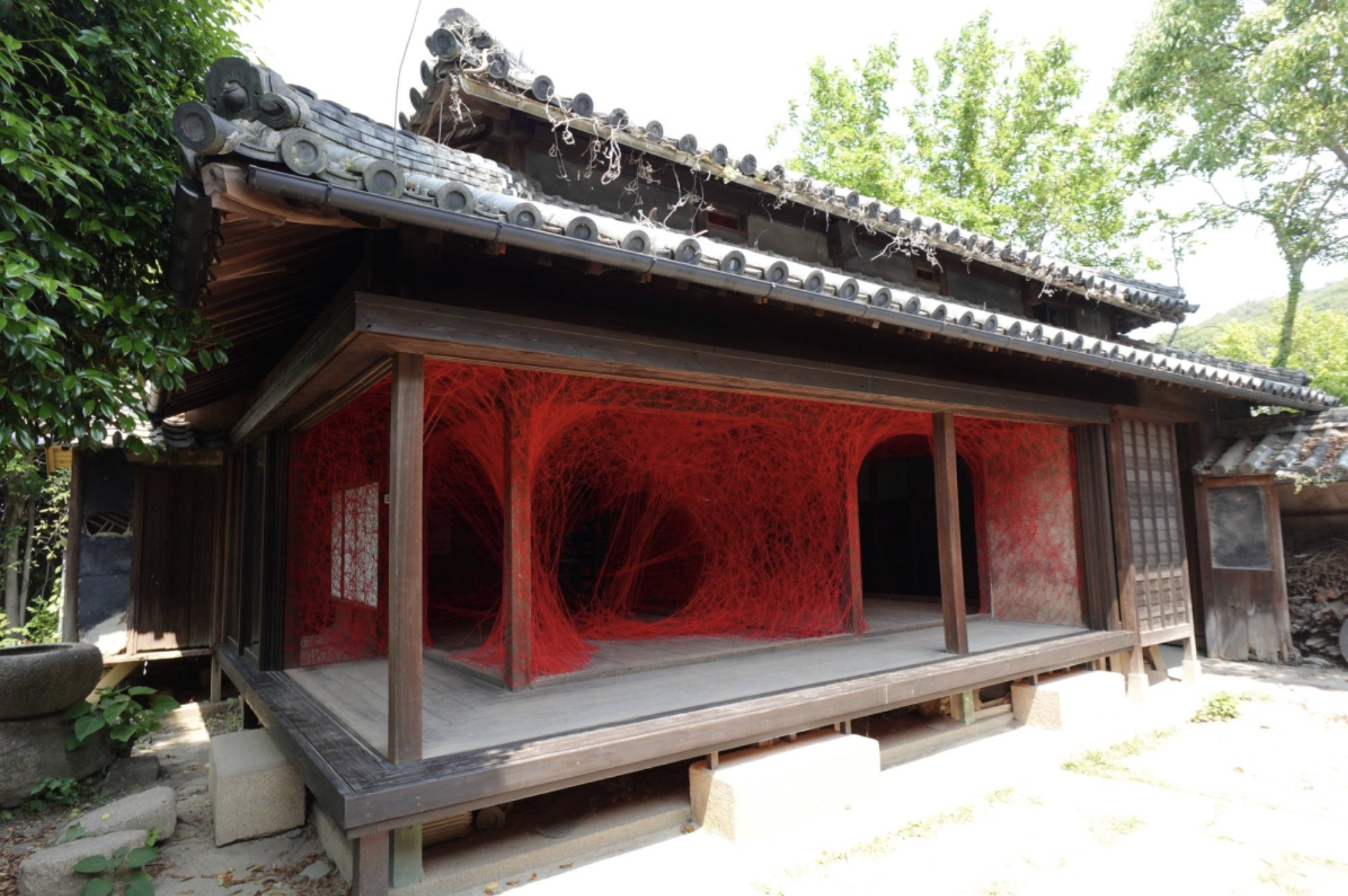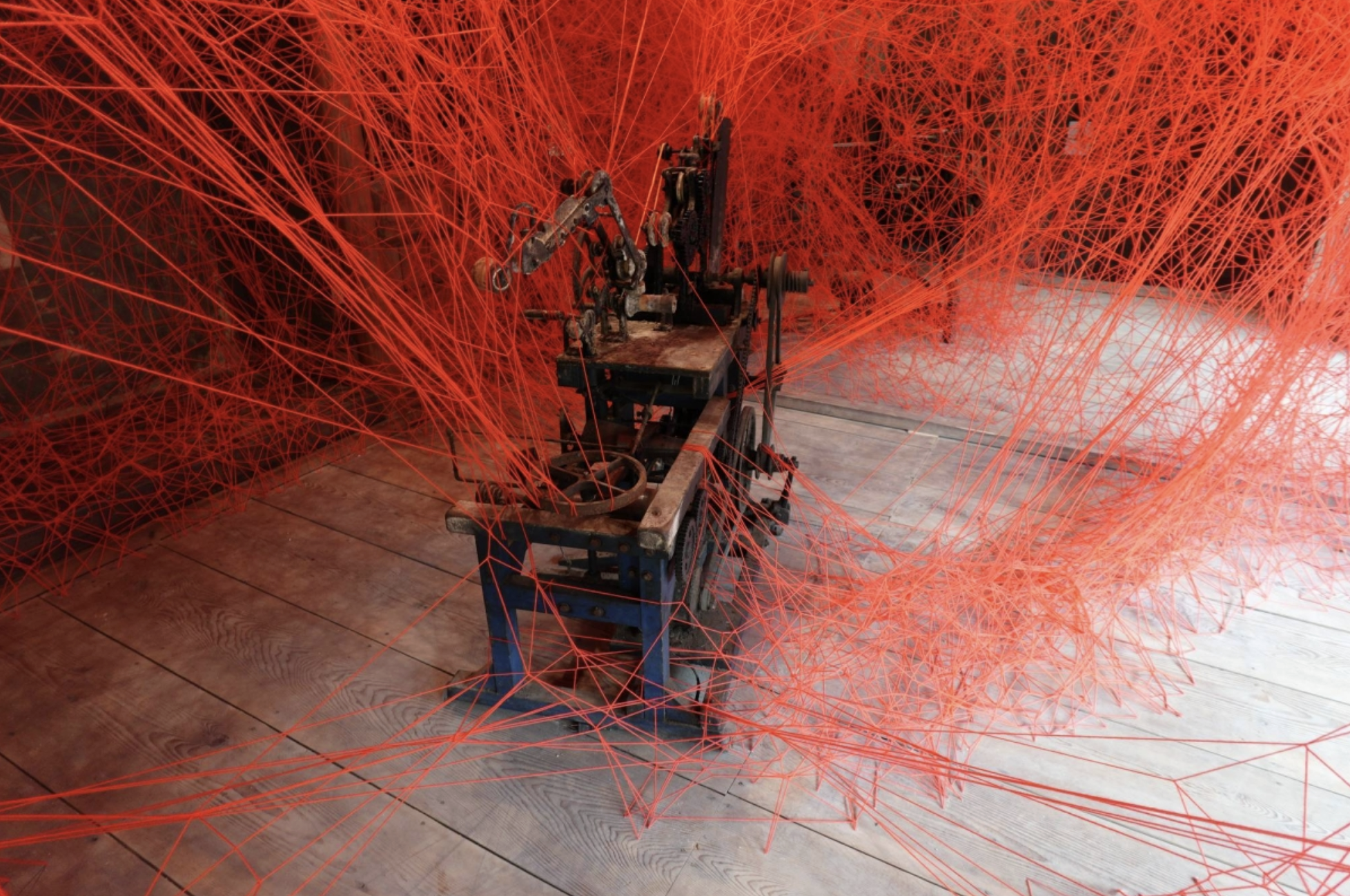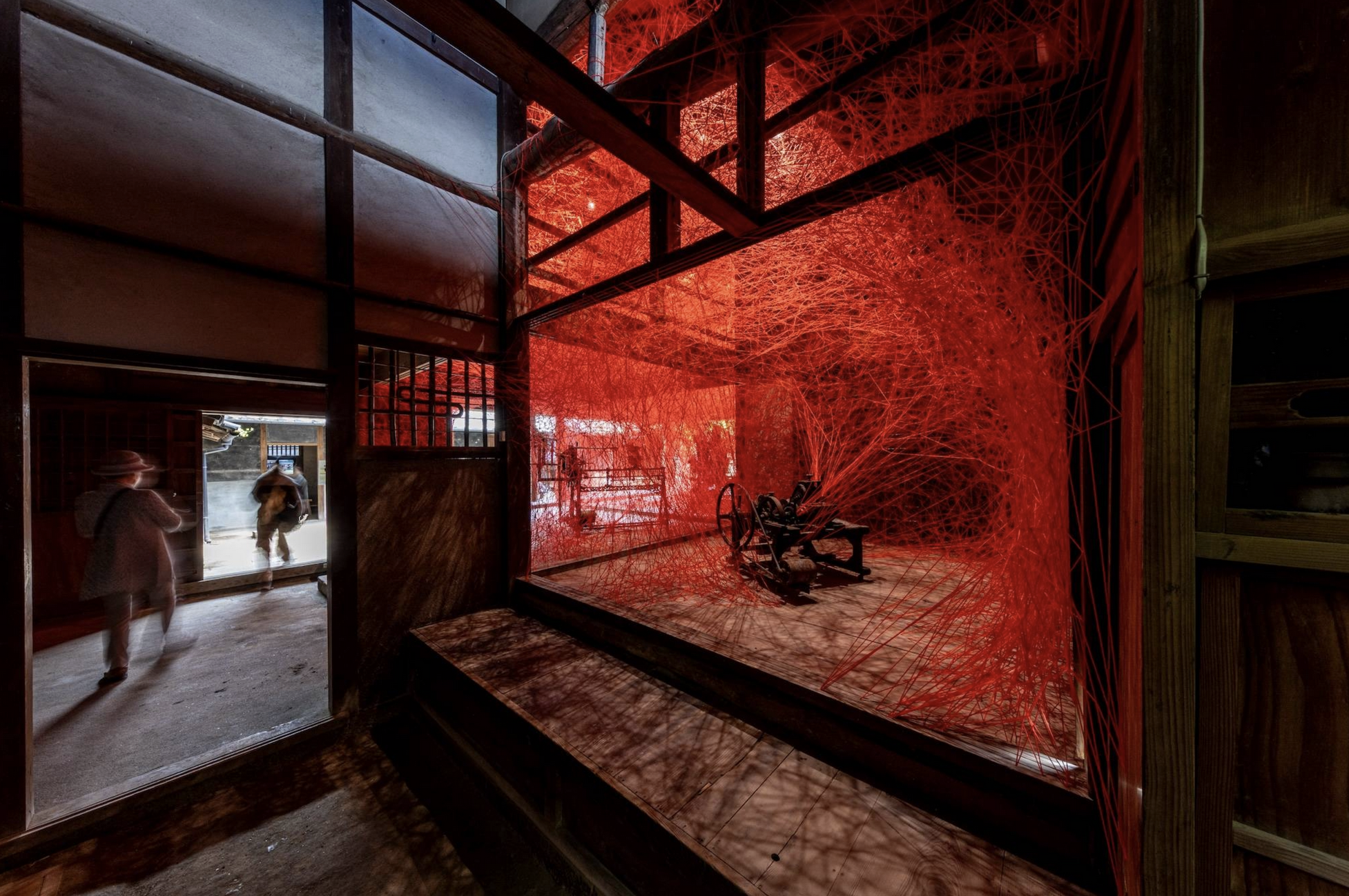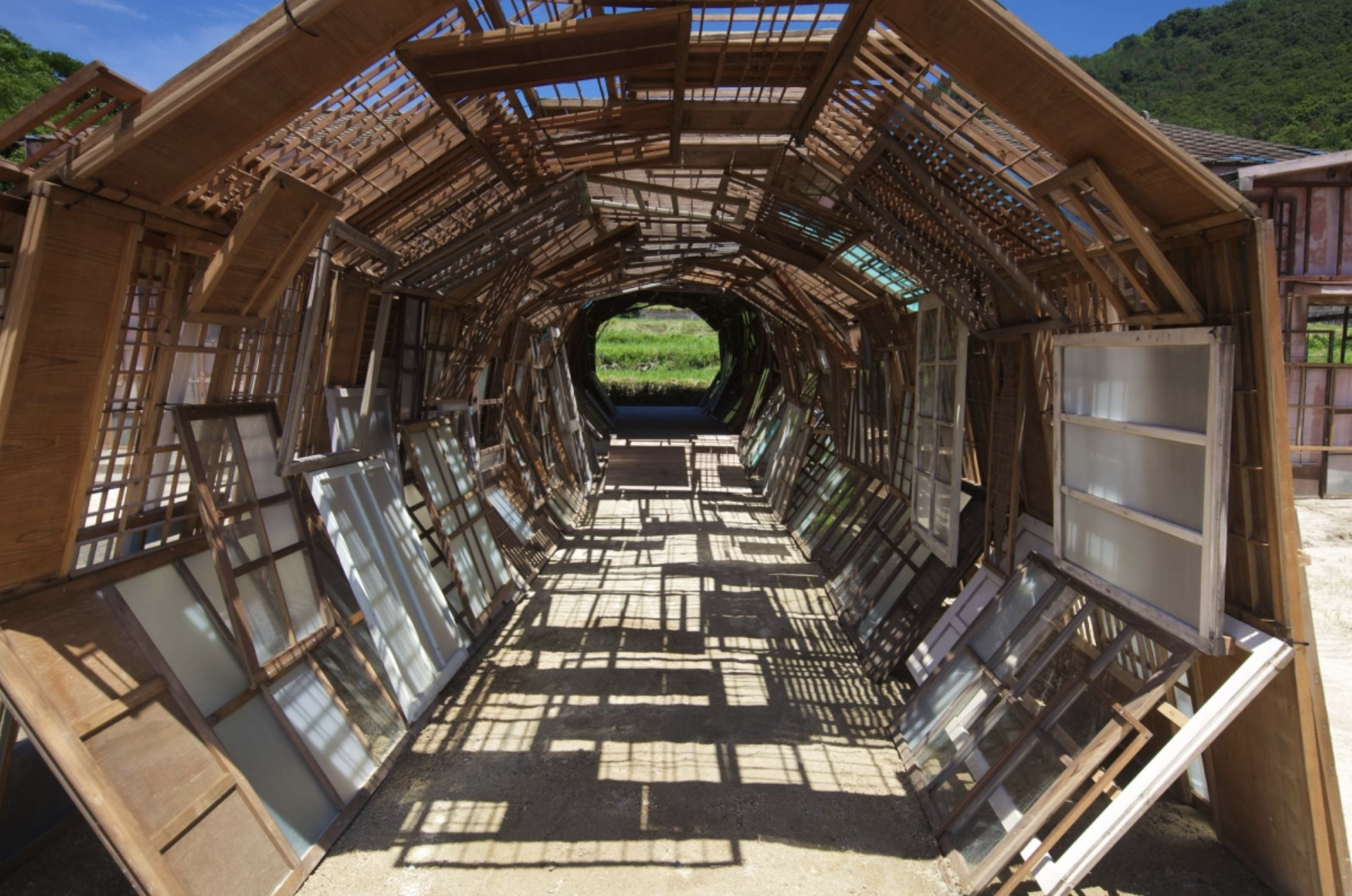The Japan Times : Artist Chiharu Shiota weaves a hidden marvel on Teshima
Teshima, Kagawa Pref. – On the far side of the island, tucked away in a dilapidated house southeast of the port and southwest of the island’s titular art museum, Chiharu Shiota’s “Memory of Lines” waits for visitors.
“Memory of Lines” is Chiharu Shiota’s second art installation on Teshima as part of the Setouchi Triennale. | Photo by Shintaro Miyawaki © JASPAR, Tokyo, 2025 and Chiharu Shiota
The installation opened this spring on Teshima as part of the Setouchi Triennale, and will reopen Aug. 1 for the summer edition. Remote and hard to access, even by the standards of the lesser known far-flung art island in the Seto Inland Sea, the work risks being seen only by scant numbers of people.
That doesn’t bother the acclaimed Osaka-born, Berlin-based artist Shiota, whose highly photogenic signature red-string sculptures have become globally recognizable.
“I don’t think it’s so important that many people see the work. Sometimes, when a place is hard to reach, the experience becomes more personal and meaningful for the people that do see it,” writes Shiota by email. “I believe art doesn’t have to be seen by many people to have value. It can live quietly and still touch people in powerful ways.”
For this year’s Setouchi Triennale, Shiota intended to construct something new, but finally she decided to repurpose an existing space. | Thu-Huong Ha.
The work spans several rooms in an abandoned Japanese-style house in the seaside area of Ko. Thick webs of red string burst forth as if spun by a zealous spider, anchored to three old sōmen noodle machines. From beyond the house come the sounds of ocean waves and the swish of overgrown trees. On the day I visit, barn swallows have taken over the entrance to the property and are fastidiously building a nest. Shiota’s web is thick and wild, suggesting that, like the trees and roost, it grows even in the absence of humans.
Shiota uses white as well as black threads in her work, evoking purity and the universe, respectively — but it’s her red strings, symbolizing bodies, familial relationships and connection, that appear most readily in art feeds. When she affixes them to used objects, the energy of the red yarn seems to release from the items like blood spurting.
A sense of anxiety pervades the artist’s work, and indeed her whole world, as she says.
“When I create, I put all of my energy into the work — my feelings, my fears, everything,” says Shiota. “Depending on how I feel, you can see it in the thread.”
The lines themselves can appear tangled or calm.
Shiota uses white as well as black threads in her work, but it’s her red strings that appear most readily in art feeds. | Thu-Huong Ha.
When creating “Memory of Lines,“ artist Chiharu Shiota asked the local villagers on Teshima which disused old objects hold a lot of memories and a woman suggested a machine for making sōmen noodles. | Photo by Shintaro Miyawaki © JASPAR, Tokyo, 2025 and Chiharu Shiota.
When Shiota conceived of “Memory of Lines,” she posed a question to local inhabitants: “What objects do you no longer need, but still hold a lot of memories, something you wouldn’t throw away, but also don’t use anymore?” A local woman showed her an old machine she used for making the fine white wheat-based sōmen noodles, an object that Shiota says had been well known in the community.
“I believe we are always connected by invisible lines,” says the artist. “My intention was to link not only the machine and its owner, but also the history of the village and the memories held within this house.”
Though Shiota’s work is seen by masses all over the world (her large-scale 2019 Mori Art Museum exhibition was shown at Paris’ Grand Palais last year and will go to Turin, Italy this fall), that hasn’t stopped her from seeking quieter places to tie her knots.
In 2009, the artist went to Teshima for the first time to work on a commission for the inaugural Setouchi Triennale. She gathered 400 doors, windows and fusuma (sliding screens) from seven Seto Inland Sea islands and created “Further Memory.” Though the piece wasn’t intended to be permanent, the locals wanted it to stay, and the work became a place of communal gathering on the island for the population of about 900, including a wedding in 2016.
"Further Memory" was Chiharu Shiota's first installation on Teshima, part of the inaugural Setouchi Treinnale. It became unstable after a decade and it had to be dismantled. | Sunhi Mang © JASPAR, Tokyo, 2025 and Chiharu Shiota.
After a decade, the tunnel of interconnected panels became unstable and had to be dismantled. For this year’s Setouchi Triennale, Shiota intended to construct something larger and entirely new, but after finding water in the soil, which made it a challenge to build, she decided to repurpose an existing space. (At time of writing, official plans for “Memory of Lines” after the triennial closes in November have yet to be decided.)
“These site-specific installations allow me to connect directly to the architecture, the light, the history and the feeling of the space,” Shiota says. “I see my works almost like drawings in air; they stretch, connect and interact with the environment around them. That connection is essential.”
Written by Thu-Huong Ha for https://www.japantimes.co.jp/

